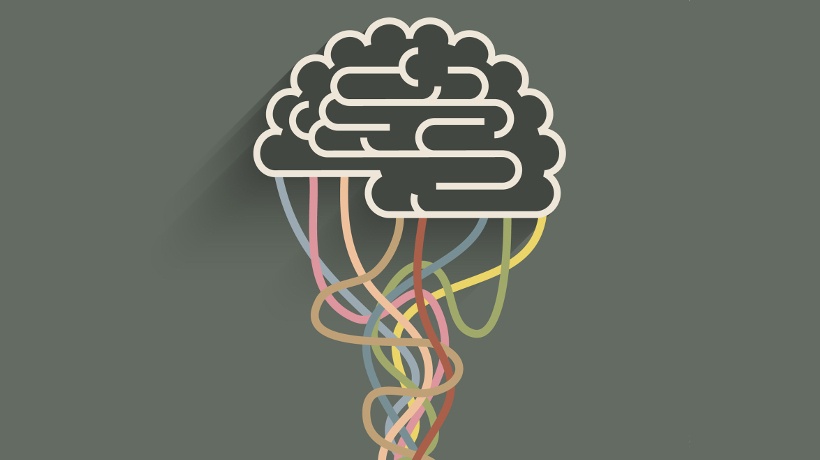Interpersonal Intelligence And Instructional Design
Professor Howard Gardner, the Hobbs Professor of Cognition and Education at Harvard, had a radical idea in the seventies:
“By 1981, I was claiming that all human beings possessed not just a single intelligence, rather we humans are better described as having a set of autonomous intelligences”.
That is from his seminal book, Frames of Mind.
If you are involved in any way in education, or training, or instructing, you should know something about Gardner’s ideas about pluralized intelligence because in the intervening years research has proved him right time and again. We do indeed learn in different ways at different stages of life, and even during a single learning experience.
The multiple intelligences identified by Gardner are: Verbal/Linguistic, Logical/Mathematical, Visual/Spatial, Bodily/Kinesthetic, Musical/Rhythmic, Interpersonal, and Intrapersonal. In this article I am going to focus on interpersonal intelligence from this arsenal of intelligences.
As you might imagine, this is the type of intelligence that allows us to work co-operatively with others in a group setting such as a family, a classroom, or a business meeting. It is a person-to-person faculty. Clearly, this skill must involve an innate ability to sense (or read) the abilities, limitations, moods, and intentions of other members of the group; and to imagine what it is like to walk in their shoes. Whether we react appropriately to our input from the group -or not- is to a large extent dependent on our level of interpersonal intelligence.
Interpersonal intelligence is best understood as the skill or ability to work co-operatively in a group using verbal and non-verbal clues as a means of communications. At its core, it is the ability to turn the personality to the outside—towards the world and its inhabitants around us.
- Interpersonal intelligence depends on listening.
- Interpersonal intelligence is how we learn to assert ourselves appropriately.
- Interpersonal intelligence is what we use to resolve conflicts.
- Interpersonal intelligence is one of the ways we can solve problems.
- Interpersonal intelligence is how we all teach one another.
- Interpersonal intelligence makes group learning possible.
We have all heard of the much overused word synergy. It actually comes from a Greek word that means working together spontaneously. This concept is at the heart of our interpersonal intelligence. We can all work together spontaneously and there is always a penalty to be paid by the group for not doing so. If the big cats of Africa did not work together as a group to find and kill lunch, then they would die and leave no offspring. The same idea of cooperative living for a common purpose is spectacularly true in anthills as well as homes, offices and military encampments.
Working in a group by getting along, with all members sacrificing some self-interest to the common good, is vital to our existence. We can all see the negative results when people –leaders especially– do not talk or listen to one another. Our interest is mostly more localized, however, so I will concentrate on the power of our interpersonal intelligence within small groups – my specialty.
The first fact to understand about interpersonal intelligence is that we communicate verbally and non-verbally.
The importance of non-verbal communication cannot be overstated. It has been estimated that somewhere between 60 and 90 percent of all information transmitted in a group is non-verbal communication.
This is not surprising, since various cognitive researchers quoted in Dr. Thomas Armstrong’s book on Multiple Intelligences.
have indicated that the human face is capable of about 250,000 expressions and the 5,000 hand gestures. No wonder we can get ourselves into trouble even when we are not speaking. I can, anyway.
Almost all of us can detect mood changes in others. We can understand at some level what kind of temperament another person has; we can often detect other people’s intentions and motivations. As Armstrong points out, mature people can literally “pass over into the other person’s life”. Astonishingly, we can not only know what it is like to walk in other’s shoes; we can even hold the opinions of others in our mind without necessarily agreeing with them; a capacity Aristotle thought was the very essence of being human.
Obviously, we can only know so much about another person by interpreting both their oral language and their body language.
In order to do so, we have four interpersonal intelligence skills: Listening skills, assertion skills, conflict-resolution skills and problem-solving skills.
Good listening is a skill that can be learned. Face the person you are listening to squarely; avoid moving so as not to distract the person talking; maintain good eye contact; encourage the person to continue talking; and at the end -making sure the other person really has finished talking- politely summarize what they said.
Being assertive in an interpersonal context, does not mean being bossy, commanding all the available space and time, or “sucking the oxygen out of the room” in modern parlance. It means being honest and sincere when giving an opinion or providing input. It means asking good questions rather than ordering that something be done.
The essence of conflict resolution is understanding. You will notice that I did not say agreeing; be mindful of all parties’ points of view. Keeping the temperature of the debate under control is also a way to make sure a conflict is settled, not exacerbated.
Problem solving is almost always best done within a group dynamic and requires all of the skills described in the previous three categories. However, if the group is made up of indecisive or grumpy individuals then the problem is best solved by conflict resolution techniques.
Interpersonal skills are an integral part of our makeup. That is why the sight of undernourished, abused, and neglected child or animal tugs at our heartstrings, and in many of the worst cases, causes an almost physical reaction of revulsion, anger, or pity. It is because our interpersonal intelligence cannot be turned off. We are by nature empathic listeners and viewers. And the closer to the other person, either by blood or proximity, the more we will be able to empathize. A total stranger in distress evokes in most people a fellow-feeling; there but for the grace of God go I.
In our caveman days before real speech was used, we simply had to be able to read another’s intentions; it was a matter of survival. Is that woman or man a suitable mate? Is that man a rival or a friend? Is that man a good hunting partner? Will that man come to my aid in a crisis? Our amazing ability to read non-verbal clues is a result of hundreds of generations of practice.
To use interpersonal intelligence in a positive manner in any training or educational way is quite simple – it’s called group learning.
It seems obvious but I will state it anyway: Interpersonal intelligence has no value except in a group setting. The most gifted person in the world at reading other people’s faces, gestures, and voice inflections cannot use this skill unless others are present. First because are no gestures and facial expressions to read if no one else is present. Second, there are no advantages to be gained if no one else is there.
The advantage of a group setting is that all present can read one another in this interpersonal and near-universal language we have evolved, and can use this skill to benefit themselves and one another. This can only work well if all members are equal. If one person is “more equal” than the rest, then he or she is the one taking advantage of that position and it becomes a lecture, not interpersonal group learning. The essence of group learning is that everyone teaches; not just one person who imparts wisdom: that’s a lecture.
As has been proved by Dr. William Glasser, an eminent psychiatrist and researcher of human behavior, we remember much, much more of what we teach than what we are told—by a ratio of 90% to 10%, in fact.
This idea of group thinking and learning goes back to the ancient Greeks. Socrates taught by what he called the dialog or inquiry method which depends on interpersonal skills. He did this because he believed that only when an answer to a question prompts another question does the process of learning continue. He knew that all new understanding and knowledge is linked to previous understanding and knowledge. And he knew all about interpersonal interaction. He knew how to ask open-ended questions to begin a dialog and he watched as learning began questioning their own beliefs and those of others. He did not lecture and he never wrote anything down, he left that to his pupil Plato, yet he is considered the best and most innovative of all teachers.
His groups were nothing more than a small number of pupils combining in a self-directed, collaborative effort under the guidance of a teacher. The group attempted to use their interpersonal skills to interpret or learn from one another’s ideas, gestures, body-language, mistakes, conjectures, intuitions, and insights. They read each other’s faces, interpreted each other’s gestures, and listened to the words being spoken. They used their interpersonal skills including the skill of listening carefully—an attribute their leader insisted upon them using—to pursue knowledge. Socrates believed in kindling the flame of learning in each one of his students this way. He simply asked questions and let the group figure out an answer by asking and answering questions of their own.
Humbly I suggest that Socrates may not have known that there was another effect at work helping his pupils to come to conclusions. It’s called the network effect and it is involved in all kinds of learning, whether between a teacher and a pupil, or whether it is a group of people connected from all over the world via a videoconferencing system. It is an effect that has become clear as we have necessarily come to a greater understanding of the geometry of our communications networks.
The network effect is simple to understand and simple to exploit. When Bell invented the telephone, it really was not of much use. He needed at least one other person with a phone to demonstrate its value. Once the other phone was in place with a wire connecting the two people as they talked, a network was formed. However, it had just two bi-directional possibilities: Bell speaking and the other person listening or Bell listening whilst his assistant spoke. Once a third phone was added then the number of relationships, or two-way communication possibilities, grew from two to six. By the time an eighth phone was added then the number of two-way connections grew to 72. A graph will show that as the number of connections grows, the number of possible relationships grows in a curve that looks like a hockey stick. That is the network effect. Businesses such as Microsoft depend on this network effect as a strategy; simply said, the more copies of their operating system that are sold, the more that will need to be sold.
Eight students in a group can have 72 possible interpersonal interactions with the other seven members. I think it makes sense that, as long as there are rules of group conduct, this number of interactions will spark more ideas than just a couple of people talking.
If all members of the group speak the same language -and by this I mean the spoken, as well as the unspoken- then ideas can be floated and tested. Of course, it is vital that one of the rules of conduct in these groupthink sessions is that no person or idea is susceptible to ridicule, just constructive criticism.
In an environment such as this, with its premium on interpersonal intelligence, the human imagination can be set free. Thought experiments can be undertaken to try to solve problems that are hypothetical. That is what Socrates wished for his pupils; and because we all have interpersonal skills the best setting for this is a group.
Conversation characterizes interpersonal skills for most of us, probably more than body language. Conversation incorporates many aspects: the rhythm of words, the expressions on the face, the gestures made as words are spoken, the logic that is being used, and the space in which the dialog takes place. Remove any of these elements and the dialog is weakened. That is why voice only conference calls can lead to more misunderstandings than videoconferencing meetings. If the dialog is weakened then so is the high order thinking that Socrates was trying to elicit.
In a dialog amongst a team of equals, all of the higher-order thinking skills come into play. Isn’t that what any business wants?
Dialog—the interaction between two or more humans—is a supreme gift. But too often it is wasted on gossip; and that’s a fact. According to researchers we spend some 70% of our interpersonal time gossiping.
Interpersonal skills, like any other skills, get better with practice. Practice can only occur in a group setting. So, the message of this editorial is simple: in order to solve problems get your people into groups, have them listen carefully to one another and agree on a solution. You get an optimal solution, and your people get to improve their interpersonal skills. It’s a win-win. The teams will feel independent and freer. The company will get the leveraged result of its team’s diversity.
“Alone we can do so little, together we can do so much.” - Helen Keller
To see how to leverage a team for maximum return watch the free demonstration here.







